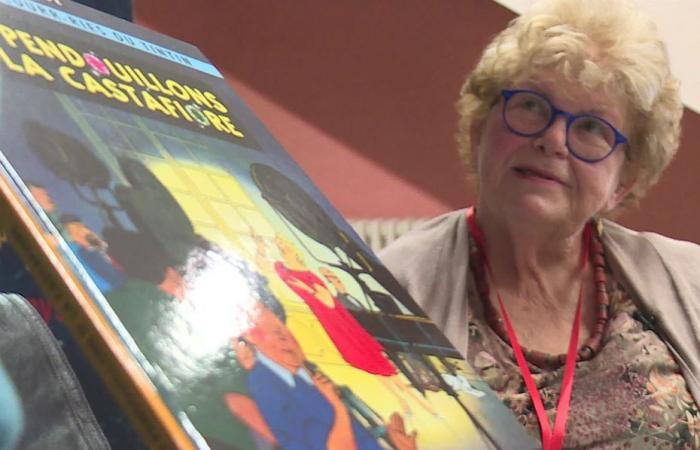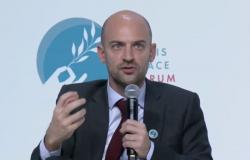“Les Bijoux de la Castafiore” is the most translated album in the Tintin universe. This time, it is the Tintinnabuler Au Montceau association which decided to adapt it into Montcellian patois, a dialect of Montceau-les-Mines (Saône-et-Loire). After more than 3,000 copies sold, the volunteers would now like to make an audio book.
Company
From daily life to major issues, discover the subjects that make up local society, such as justice, education, health and family.
France Télévisions uses your email address to send you the “Society” newsletter. You can unsubscribe at any time via the link at the bottom of this newsletter. Our privacy policy
Tintin is in Saône-et-Loire. In 2023, the Tintinnabuler Au Montceau association, with the help of Éditions de la Bourbince, Hergé and Casterman, published a modified version of the album “Les Bijoux de la Castafiore”.
“Les Pendouillons d’la Castafiore” is the first comic strip translated into Montcellian.
•
© Mazigh Abdelli / France Télévisions
Since 2014, they have been nurturing this crazy project: translating a Tintin comic strip into Montcellian patois, an old dialect of Montceau-les-Mines. The fruit of this hard work is called: “The Pendouillons of the Castafiore”. This Sunday, November 10, the book was presented at the fair organized by Énergies citoyennes de Montceau-les-Mines in Saône-et-Loire.
Building on their success, the members of the association are now trying to adapt it in audio format.
“It’s more than a satisfaction, we were almost stunned by the success”confides Marie-Claude Valabrèguemember of the association Tintinnabuler Au Montceau, in a trembling voice. “Especially at the pop-up shop in December because people were coming all the time.”
After this achievement, the association also wants to release the album as an audio book. “It’s for the visually impaired on the one hand and on the other hand for people who would like to have the sound, the accent… It’s a big job, I don’t know if we will succeed, but we will to try.”
The objective behind this project: to make the Montcellian dialect known to adults and children alike.
What other choice did they have than to opt for the most translated Tintin album in the world: “Les Bijoux de la Castafiore”. This is not the first time that the work has been translated into regional languages, far from it. A few weeks ago, Los oreries d’lai Castafiore, the Champardennaise version, was added to some 80 other translations from the four corners of France.
For Marie-Claude Valabrègue, there is a very precise explanation for this choice: “It’s the most translated album because there is a unity of place and it takes place in France. You don’t see Tintin in Tibet by the Montcellians, we say to ourselves that Moulinsart is perfect.”
Marie-Claude Valabrègue is part of the Tintinnabuler Au Montceau association.
•
© Mazigh Abdelli / France Télévisions
But above all, it was an idea of her husband, Jean-Pierre, a “tintinophile”, as she describes him. The retiree, who is not from Montceau-les-Mines, wanted to produce this translation for the 50th anniversary of the work. With Jacky and Josiane Lamborot, their friends, they met for a year, for meals, coffees, aperitifs and above all to each time translate a little more bubbles from the famous comic strip.
Also, the association does not plan to launch into the translation of other Tintin albums in the future.
We then had to convince Hergé and Casterman, the rights holders and publishers of Tintin. “It’s quite simple, you just need to have the courage to get started”assure Jean-Michel Chantreault, Éditions de la Bourbince and member of the Tintinnabuler Au Montceau association. “On the other hand, you have to be ready to put a certain amount on your back.” Because the association had to pay in advance for the draw, without being sure of ever being able to recover its initial stake.
Jean-Michel Chantreault, from Éditions de la Bourbince and member of the Tintinnabuler Au Montceau association
•
© Mazigh Abdelli / France Télévisions
3,000 copies had been published in 2023. Thanks to the installation of a small pop-up store in December 2023 at the town hall in Montceau-les-Mines, “practically everything” had been sold. Since then, they have bought back 1,000 which “are running out”.






